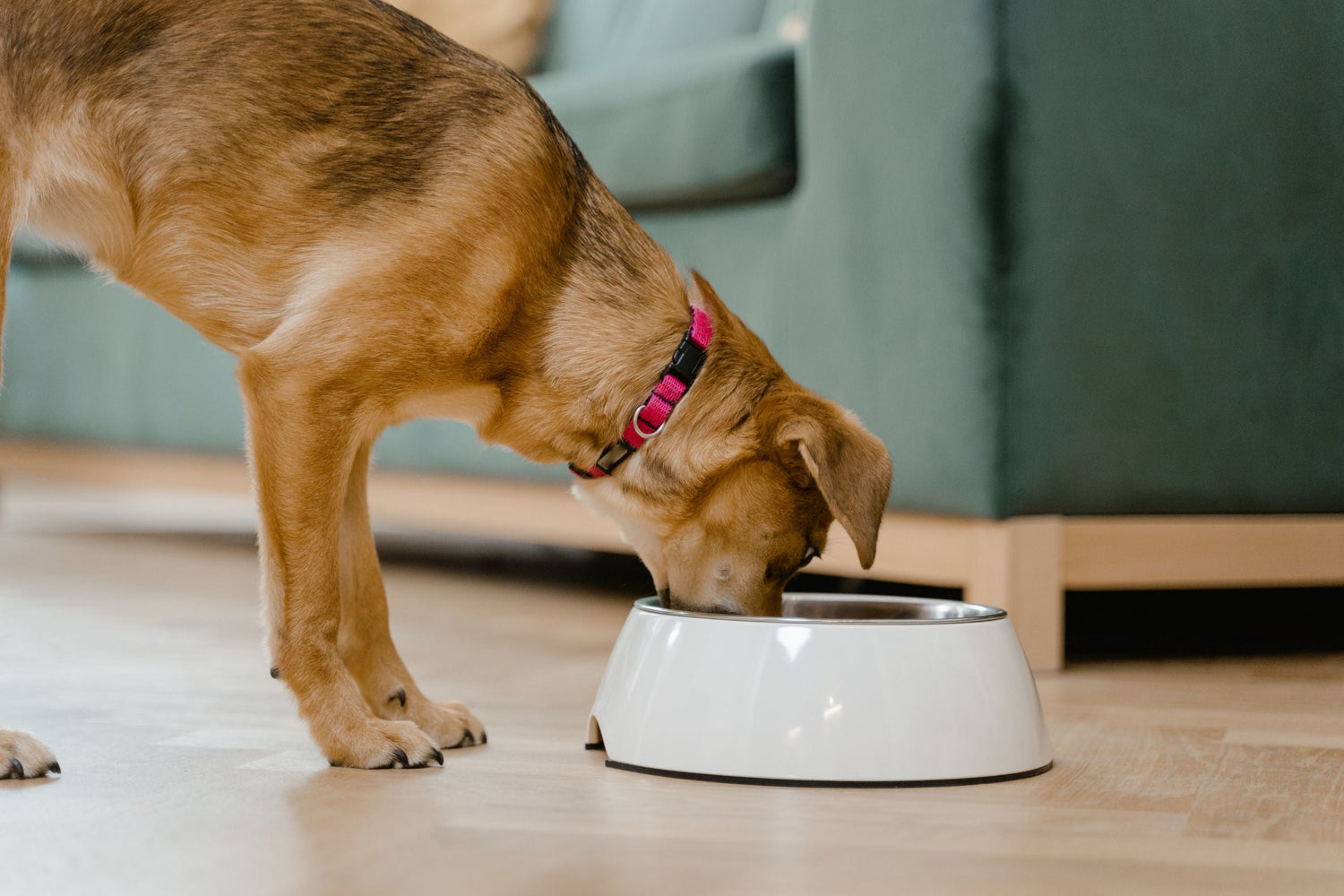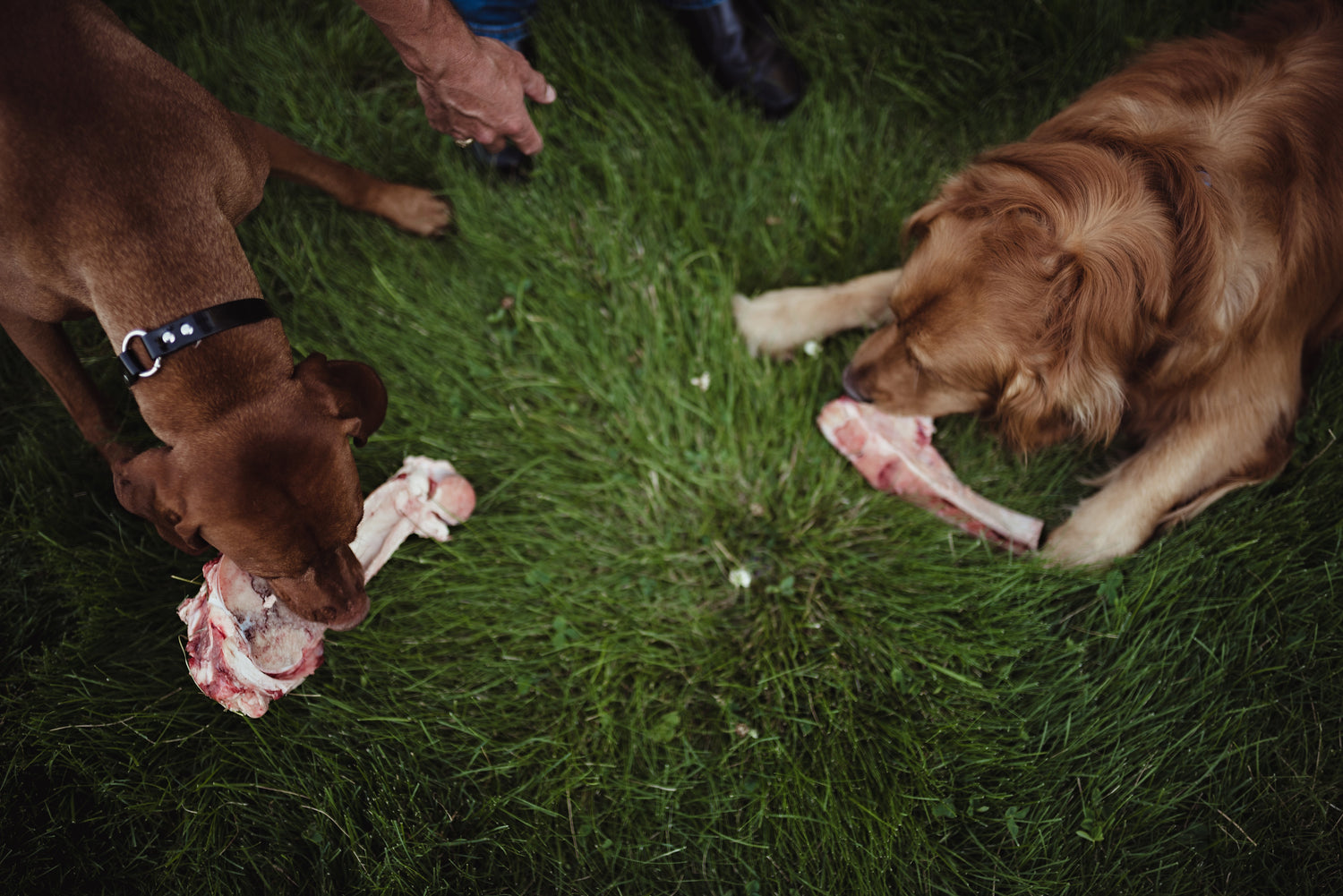Wondering if your dog should be chewing on bones? The answer is a resounding yes—when done safely and correctly, raw bones offer major physical and nutritional benefits. Here’s why bones belong in your dog’s diet and how to introduce them properly.
Dental Health Benefits
Raw bones aren’t just treats—they’re nature’s toothbrush.
The act of chewing and gnawing helps clean your dog’s teeth, reduce plaque and tartar buildup, and prevent gum disease. In many cases, bones offer a natural alternative to brushing, helping maintain oral health in a way dogs actually enjoy.
Nutritional Power of Raw Bones
In addition to dental benefits, raw bones deliver vital nutrients:
-
Calcium – Supports bone strength, vision, blood clotting, kidney, and heart function
-
Glucosamine & Chondroitin – Promote healthy joints, connective tissue, and gut lining
-
Collagen & Elastin – Help maintain a strong skin barrier, coat health, and gut integrity
-
Vitamins E, A & K2 – Offer antioxidant protection and support cellular health
Raw bones are also calorie-dense, which is beneficial for active or working dogs. For less active pets, be sure to adjust meal portions accordingly to avoid overfeeding.
Mental Stimulation & Behavior
Bones aren’t just nutritious—they’re also great for enrichment.
Chewing on raw bones can calm anxious dogs, discourage destructive habits (like licking, scratching, or chewing furniture), and offer important mental stimulation. Chewing is instinctual, and giving your dog something healthy and appropriate to gnaw on channels that energy in a positive way.
Are Bones Safe for Puppies?
Yes—puppies can absolutely enjoy raw bones when chosen carefully.
Chewing helps young dogs build jaw and neck strength while satisfying their natural teething urge. Raw bones can also help teach puppies what’s appropriate to chew (and what’s not). Just be sure to select bones that are soft, properly sized, and easy to chew for smaller mouths.
How to Safely Introduce Bones
If your dog is new to raw bones, start slow. Here's a step-by-step approach:
-
Start with short chew sessions (15–20 minutes at a time).
-
Supervise at all times to prevent choking or large fragment ingestion.
-
Watch for digestive sensitivity—marrow is rich, and too much too fast can lead to loose stools. If that happens, reduce access time and reintroduce gradually.
-
Feed raw bones up to three times a week, depending on your dog’s tolerance and diet.
You may notice your dog’s stool becomes sandy or chalky after eating bones—this is normal and simply reflects excess calcium being excreted.
Tips for Feeding Raw Bones Safely
-
Always supervise your pet. Never leave dogs alone with a bone.
-
Feed in a cleanable area. Use a towel, kitchen floor, or outdoor space.
-
Handle raw bones like raw meat. Wash hands and surfaces thoroughly after use.
-
Choose the right size. Big bones for large or aggressive chewers; medium marrow bones, chicken feet, wings, or turkey necks for small dogs.
-
Don’t leave bones out. Refrigerate leftovers and discard within 2–3 days.
-
Remove when clean. Once all meat and marrow are gone, discard the bone—dry bones become brittle and can damage teeth.
-
Never feed cooked bones. Cooked bones can splinter and cause serious injury.
Final Thoughts
Raw bones offer more than just a treat—they’re a powerful tool for improving your dog’s dental, physical, and mental health. With the right size, preparation, and supervision, they can be a safe and enriching part of your pet’s routine.
Have questions about the best bone for your dog’s size or diet? Contact us—we’re here to help.






